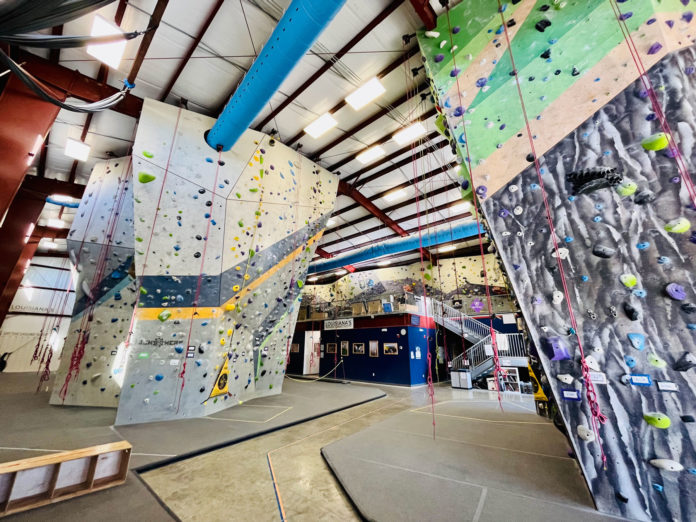Behind the Desk is a series that interviews people who are part of the climbing industry, whether owning gyms, managing staff, jumpstarting companies, or championing interesting ideas. For this installment, we talk to Lee Guilbeau and Robb Antrobus, who co-founded UpTown Climbing in Baton Rouge, Louisiana, in 2017. The origin of the gym was an intriguing mix of identifying a primed market and navigating the world of business development, and within that is useful advice for anyone considering opening an independent, non-franchise climbing gym.

Names: Lee Guilbeau and Robb Antrobus
Titles: Co-owners and operators of UpTown Climbing
Location: Baton Rouge, Louisiana
CBJ: Your gym was founded in 2017, but I’m sure there’s a backstory that took place before that. Fill me in.
GUILBEAU: We’re both Baton Rouge natives and, in fact, went to the same high school. But we weren’t acquaintances and had never met until a chance meeting at the CWA Summit in 2014; we happened to both be at one of the gym startup pre-conference workshops. We were each looking for startup ideas and business plans. I had already gone through a couple of potential business partners, and Robb had been working with someone in Los Angeles to try to open a climbing gym in Southern California. But nothing had come of any of that for either of us—so, we were both at the CWA Summit individually, and we just happened to meet there. We kept in touch about doing something together in Baton Rouge, and eventually it made sense—so we started looking at the initial hurdles to a business venture together. In terms of the backstory of the gym’s opening, it was months of FaceTime and conference calls, hashing out the big list items.
ANTROBUS: Yeah, so that was in 2014, and it was still three years before we actually opened the gym.
Were you both dedicated climbers prior to opening the gym, or were you non-climbers that just saw climbing as an intriguing business opportunity?
ANTROBUS: I had been climbing off and on for 20 years. I lived in New Jersey from about 2001-2009, and a couple years into living there, The Gravity Vault opened their first gym. I met an awesome group of friends—we started climbing at that gym regularly and began doing some local outdoor trips, then a couple of trips to Yosemite, and eventually climbing became our annual two-week vacation. But when I moved to California after that, I didn’t climb for quite some time. The whole concept of opening a climbing gym began for me when a former colleague and I were having a beer—I had just quit my job—and I was wondering what I should do. This friend and I had just summited Mount Whitney together, and that beer conversation was the genesis of the gym idea.
GUILBEAU: My post-college days took me from a slight interest in climbing into a NOLS course in Wyoming. I also did a semester-exchange to Fort Lewis, in Durango, and got college credit for a climbing course. So, I ended up moving back to Baton Rouge after all that, and never stopped climbing. In terms of surrounding states, there’s great climbing in Texas, Arkansas, Alabama—I would do weekend trips to those spots every month for years and years. Then, when I bought my house in 2008, the first thing I did was build a homewall in the garage. It took about a year to construct, and at the end of the year, the municipal park here built an outdoor climbing tower…but didn’t have anyone qualified enough to work it—they kind of opened the wall with only a very basic operations plan. So, I saw potential through that to grow the climbing community a bit more. I worked for the city park, managing that wall, for four years or so. I quit that job when we started construction of the walls at UpTown.
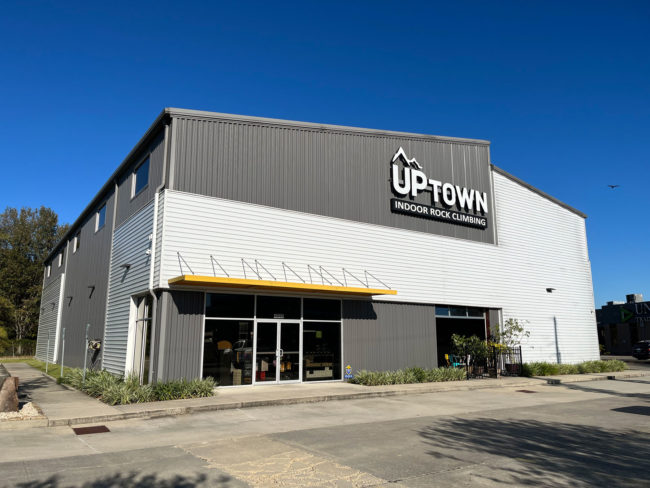
Aside from you both being from Baton Rouge and having a personal connection to the place, what other aspects of the city made you feel strongly that a climbing gym could thrive there?
ANTROBUS: A couple of things. First, there had been a climbing gym in Lafayette, Louisiana, an hour west of Baton Rouge, for almost 20 years at the time. And pre-Hurricane Katrina there had been a climbing gym out in the New Orleans area that had been doing pretty well until the hurricane. So, we knew climbing gyms could be successful here—and this was also the period where we were starting to see climbing gyms being built in more non-mountainous areas around the country. So, we purchased the consulting package from Rockwerx, which came with a substantial pro forma analysis that we took advantage of, plugged in the demographic data and so forth, to help validate our assumptions. Also, we knew when we first opened, at least we would have those climbers that frequented the wall in the municipal park, which Lee mentioned.
GUILBEAU: Baton Rouge is a college town…LSU [Louisiana State University] is located here. So, at least a certain percentage of college-age students would be interested in coming to a climbing gym. And it just seemed like there was more potential interest from the Internet, with social media and whatnot. It was hard for me to turn in any direction without seeing something climbing related at the time on the Internet.
I do wonder whether college towns might be future markets that are targeted en masse for climbing gyms. Obviously many college towns already have climbing gyms, but there are plenty of college towns out there that have student bodies of 20,000-30,000 students—or more—yet do not yet have a climbing gym.
ANTROBUS: I think it depends, frankly. Some of our hopes, with respect to the LSU college demographic, were not met. It depends largely on what a university in a town offers. LSU built—I forget when it opened—but they built a giant rec center that has a pretty substantial climbing wall. Students who are typically on a budget aren’t going to pay to climb at our climbing gym when they can climb at that university rec center for free—for which the dues are included in their tuition. So, that’s why I say ‘it depends.’
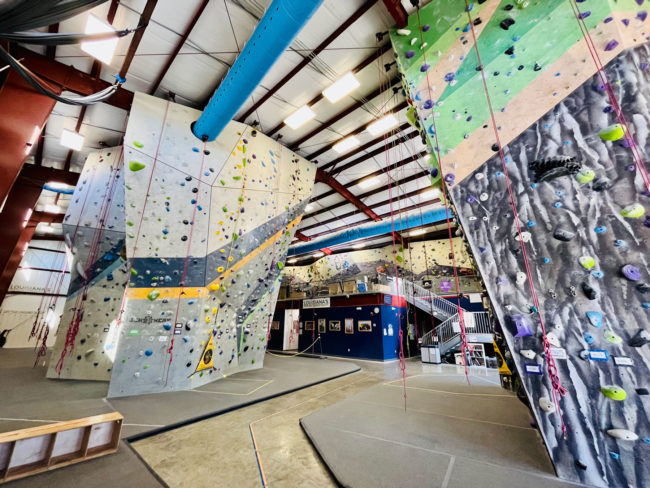
Speaking of the early stages of your gym’s development, I read that you got some help from the Louisiana Small Business Development Center at Southeastern Louisiana University (LSBDC). Can you expound a little on what type of help they provided?
ANTROBUS: I think there were a couple aspects. The first was in developing the business plan, and the second was in monthly entrepreneurial roundtables of people from all sorts of businesses…which Lee and I would attend together or separately—people sharing information, guest speakers talking about topics ranging from HR to finances to lending, etc. But prior to that, we already had a very strong and substantial business plan and we had been working with banks to try and get the lending, but we were not having a lot of luck. So, what the LSBDC did for us was take all the financial info from our pro formas and put it in a format that was more appropriate for the banks. So, it was almost like the LSBDC massaged it from a presentation standpoint into something that fit better for what the banks were looking for.
GUILBEAU: Yeah, the hurdle with that early financing was that banks saw that this was the first venture of this type or size that we were doing on our own. We had information from other businesses, but not from our own business. We also heard several times that our business plan was awesome but it didn’t fit a certain bank’s risk portfolio for a loan.
ANTROBUS: I think it’s fair to say if we would have gone the franchise route, it would have been easier. But we’re in the swamp building a climbing gym, which is quite a leap of faith for a bank down here. We had no history of profitability. They just didn’t have anything to look at to convince them that it would be viable. It wasn’t until bank number 10 or 12 or something like that that someone said, ‘OK, we’re with you.’
You mentioned attending the CWA Summit, and I know that the topic of obtaining bank loans has been a big discussion topic at Summits in years past. I think it’s a big topic for every independent gym owner. Did you find that many of the banks in your area just weren’t familiar with what, exactly, climbing was—or what a climbing gym was? Or were they unfamiliar with the exact liabilities of a climbing gym? Or was it something else?
ANTROBUS: Honestly, it was probably a combination of all those. We were coming to the table with a healthy portion of equity—this was not like buying a house, the 80/20 rule, where you come to the bank with 20 percent. We were going to these banks with more than that. But the banks just looked at our business plan and thought it was too high of a [financial] risk. Part of that risk was in the banks just not knowing anything about rock climbing.
GUILBEAU: I wouldn’t expect bankers to know anything about rock climbing, necessarily. But understanding the program offerings of our proposed gym and how wide a net our target demographic was—from four-year-olds to 70-year-olds, the sky is the limit for who could be attracted to climbing—getting that point across to the banks was hard. I don’t think the banks realized our vision, which was that a climbing gym could be a hit among pre-teens and 20-somethings and millennials and boomers and everyone in between.
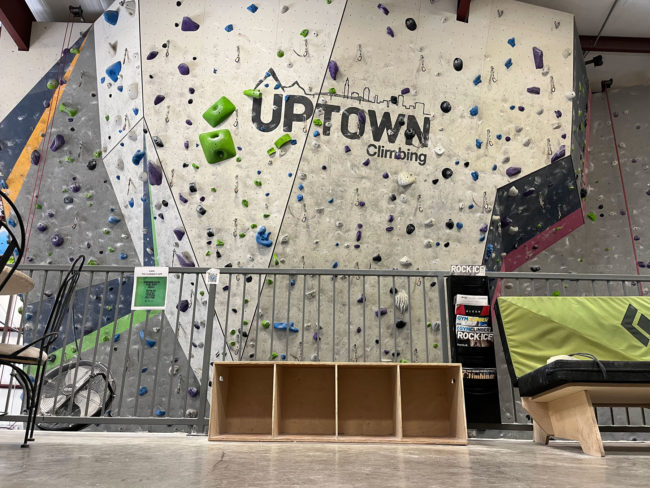
Right, a climbing gym is a fitness hub, a social hub, a lifestyle hub. I wonder if more banks are savvy to that in 2021 than they were five or ten years ago.
ANTROBUS: Well, also as an industry we’re starting to see more consolidation now. I think it would have been easier for us to open a trampoline park back then because there were national franchises for that at the time. I think one of the only announced franchises for climbing gyms was The Gravity Vault. I think it has to do with maturity of the industry, and banks being able to look out and see some kind of data that gives them confidence that a climbing gym could pay back a loan.
GUILBEAU: We actually did talk with another franchise that was just starting up, and listened to their pitch and weighed whether it’d be right for us and whether we could commit to their business plan.
ANTROBUS: If you think about the benefits of franchising, in my mind, it’s primarily two things: Brand recognition along with marketing collateral, which is why you’d be paying off-of-the-top line annual marketing fees, and an operations manual. But you have to pay those fees in perpetuity. Currently, climbing gym brand recognition means very little – not like Soul Cycle or Orange Theory. So, my thinking was that our gym might have a few rough initial years financially as we worked out operational kinks, but at least we wouldn’t have to pay those franchise fees in perpetuity. And I really like what some franchises are doing, but it just wasn’t quite right for us at the time.
I often find myself comparing the climbing gym industry to other industries, whether it’s the skateboarding industry or the tennis or martial arts industries—which also have facilities around the country. But the trampoline park industry is not one that I usually consider.
ANTROBUS: I reference it, specifically, because when we did our analysis for Baton Rouge, that was our main competition at the time, although indirect—that was really the only other adrenaline-filled, quick and fun exercise that competed for the birthday parties we needed for revenue.
GUILBEAU: It was hard for us to directly compare because most trampoline parks charge by the hour. But the fitness industry has such a huge spectrum of pricing models – there are some memberships that charge $10/month and others like studio boutiques that charge $200/month. So we tried to figure out the sweet spot for pricing, and where we settled was mainly with the climbing industry standard—look at 100 different day pass and membership rates and see where we could fit it with what we could offer.
The industry has certainly standardized a pay model—with day pass rates and membership rates (usually monthly or annual). Sometimes I’ve wondered why more gyms don’t think outside the box and try something like hourly rates.
ANTROBUS: I’ve pondered that myself, and I think I like the [standard industry] model, and here’s why: From a marketing and advertising standpoint, what sounds better? You can come in and climb for two hours at $10/hour…plus the cost of rental gear, or, You can come in and climb all day for $20. Climbing all day sounds better, of course. But when you actually break it down, not many people who walk in off the street climb for more than two hours; their skin can’t handle it. So, the majority of your day-pass walk-in climbers are not climbing for more than two hours. But the value proposition of an all-day rate at a climbing gym for them sounds so much better than, say, going to the trampoline park and paying an hourly rate.
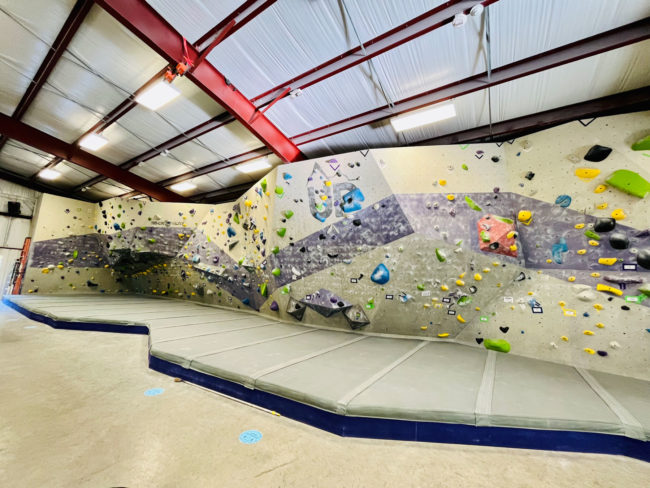
We’ve talked a lot about your gym’s backstory and development. But did opening the gym go according to plan—and, related to that, what does the future hold from an operational standpoint?
ANTROBUS: It has all gone pretty close to plan. In hindsight, there are facility things that we would have changed, looking around the gym and looking at how the climbing gym market has developed today. For example, a discussion that we’ve had lately is where can we fit a MoonBoard or a Kilter Board or a Grasshopper Board. That’s going to take a shoehorn to fit—or we’ll have to bust out some walls. But we came in on a shoestring budget and we have tried to make this whole thing work. There were no guarantees. But the balance of membership to walk-ins to birthday parties has been about what we guessed, at least until COVID-19.
GUILBEAU: Maximizing the space that we have is the priority. We’re on track to feel like most of our operating hours are moving towards capacity…and the programs and the classes we offer are tweaked all the time to find what will work best for our membership.
ANTROBUS: At the end of the day, considering we got clobbered by a pandemic 2.5 years after opening, we are pretty lucky to be here. Our membership really stuck by us when we were closed and as we gradually reopened. So without them and the financial support from the SBA, we’d be in trouble. But we are gradually getting back to our 2019 numbers and looking forward to growing beyond those so we can keep adding to our members’ experience. No place to go but Up, as we like to say around here. Make sure you capitalize that “U” in Up.

John Burgman is the author of High Drama, a book that chronicles the history of American competition climbing. He is a Fulbright journalism grant recipient and a former magazine editor. He holds a master’s degree from New York University and bachelor’s degree from Miami University. In addition to writing, he coaches a youth bouldering team. Follow him on Twitter @John_Burgman and Instagram @jbclimbs. Read our interview Meet John Burgman, U.S. Comp Climbing’s Top Journalist.



